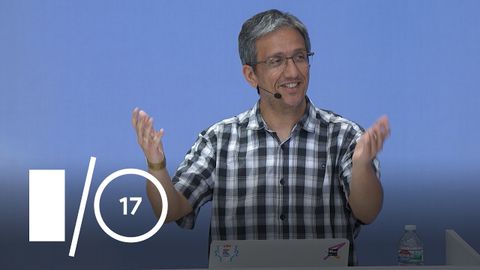Kotlin介紹(Google I/O'17 (Introduction to Kotlin (Google I/O '17))
nctuharuka 發佈於 2021 年 01 月 14 日  沒有此條件下的單字
沒有此條件下的單字US /ɪˈsenʃəli/
・
UK /ɪˈsenʃəli/
- adv.本質上 ; 本來 ; 實質上;本質上;實際上
- n. (c./u.)串;束;一群人
- v.t.使成一串
- v.t./i.打褶
US /ɪkˈsprɛʃən/
・
UK /ɪk'spreʃn/
- n. (c./u.)表達;措辭;表情;表達式;表現;表現
US /ˈbesɪkəli,-kli/
・
UK /ˈbeɪsɪkli/

